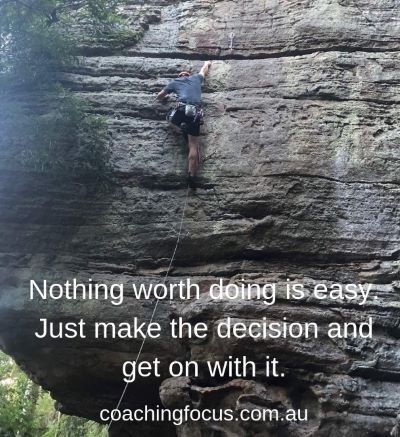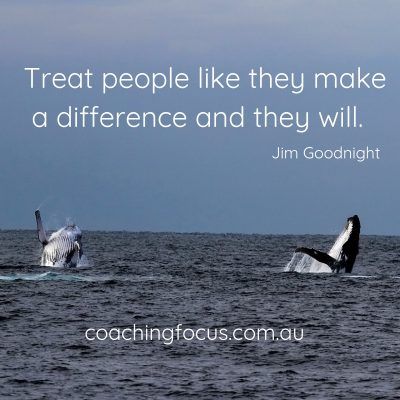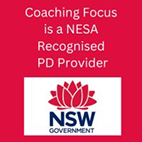Beware of the Monkey
As part of the Elevating Leadership Program, in Module 2, Managing Conflict, there is a segment called Beware of the Monkey. The ‘monkey’ is an analogy for a task and we talk about how the slippery ‘monkey’ can so quickly jump from someone else’s back to yours before you have even noticed.
The term ‘monkey on your back’ was coined back in 1974. Back then other terms we often used such as ‘manager’ and ‘subordinate’. Thankfully we use those terms less now, however, the concept of the ‘monkey’ remains true.
It happens so easily.
It happens so easily. Your team member comes to you to share a problem with you as the team leader, and before you realize you’ve said it, the golden words have been spoken by you. You say….“Leave it with me”. There it is. Job done. The monkey has made the jump from your team member’s back to yours in the blink of an eye. You have successfully just given yourself an extra task to do and your team member now has one less. Congratulations, every time you do this your task list gets bigger and theirs get smaller. Hardly a win-win.
You may have done this for many reasons; not having the answer right away, not feeling your team member can handle the task, perhaps time is running out and you are thinking it is quicker if you just get it done yourself. Whatever the reason, it is worth considering why your task list is growing and those of your teams are not. Your ‘monkeys’ are multiplying. You need to take control of the ‘monkeys’.
Your role as a leader.
Our role as leaders is to lead by influence, to inspire and to empower. The greatest leader you can be is one who builds capacity in others. Taking tasks aka ‘monkeys’ from your team members doesn’t grow capacity or empower. Every time you do a task that one of your team has passed to you, you are depriving them of the opportunity to tackle something new and to grow. So instead, the leader we need you to be is one who sits with the team members and explores the problem together, uses open questions in a coaching style to explore the problem and how the team member can manage through the problem, but keeping it as their problem to solve. They keep the ‘monkey’ and from your conversation, you are empowering them with the tools and resources to manage it. Their capacity is built through the conversation and through completing the task. You have inspired them, helped them to see capabilities they may not have seen before, identified resources and strategies they may not have considered before. In the process, you haven’t added to your task list. Finally, a win-win.
I was recently in Sydney working with the leaders at Masada College, and I shared with them a small set of coaching questions that will help to support the person who has come to you with their ‘monkey’. The questions show your support and willingness to collaborate on the problem, while empowering them to continue to stay with the problem and work through it. The Masada College workshop was about conflict management, and you are probably wondering how this relates to managing conflict, so, allow me to explain. Some leaders feel that because they have the title of leader, they should have all the answers, be the so-called ‘font of all knowledge’ and be able to solve all the problems. This is especially true of younger leaders and those who are keen to prove their worth, perhaps in a new role. There is this internal pressure to be ready with the answers and when they don’t have the answer, to address their sense of responsibility or inadequacy, they quickly take on the problem themselves. They collect ‘monkeys’. The same feeling of anxiety comes up in this situation for them as when they are in a difficult conversation and the quickest way to relieve their discomfort is to take on the task.
Using a coaching approach.
The questions below are a useful resource to use in those moments when someone comes to you with a problem or task. You can work through the problem with them, supporting them through the thinking involved and assist them in finding their next step. They will be empowered and you have helped to build their capacity in the process. They leave the conversation still with the ‘monkey’. Job done. No more ‘monkeys’!
Try the questions below and see how effective they are for you.- What can I help you with?
- What have you done so far? or What have you considered so far?
- What are your options from here?
- What support do you need?
- Where can you source that support?
- What specifically can I do to support you?
- When would you like to meet again to continue this conversation?











